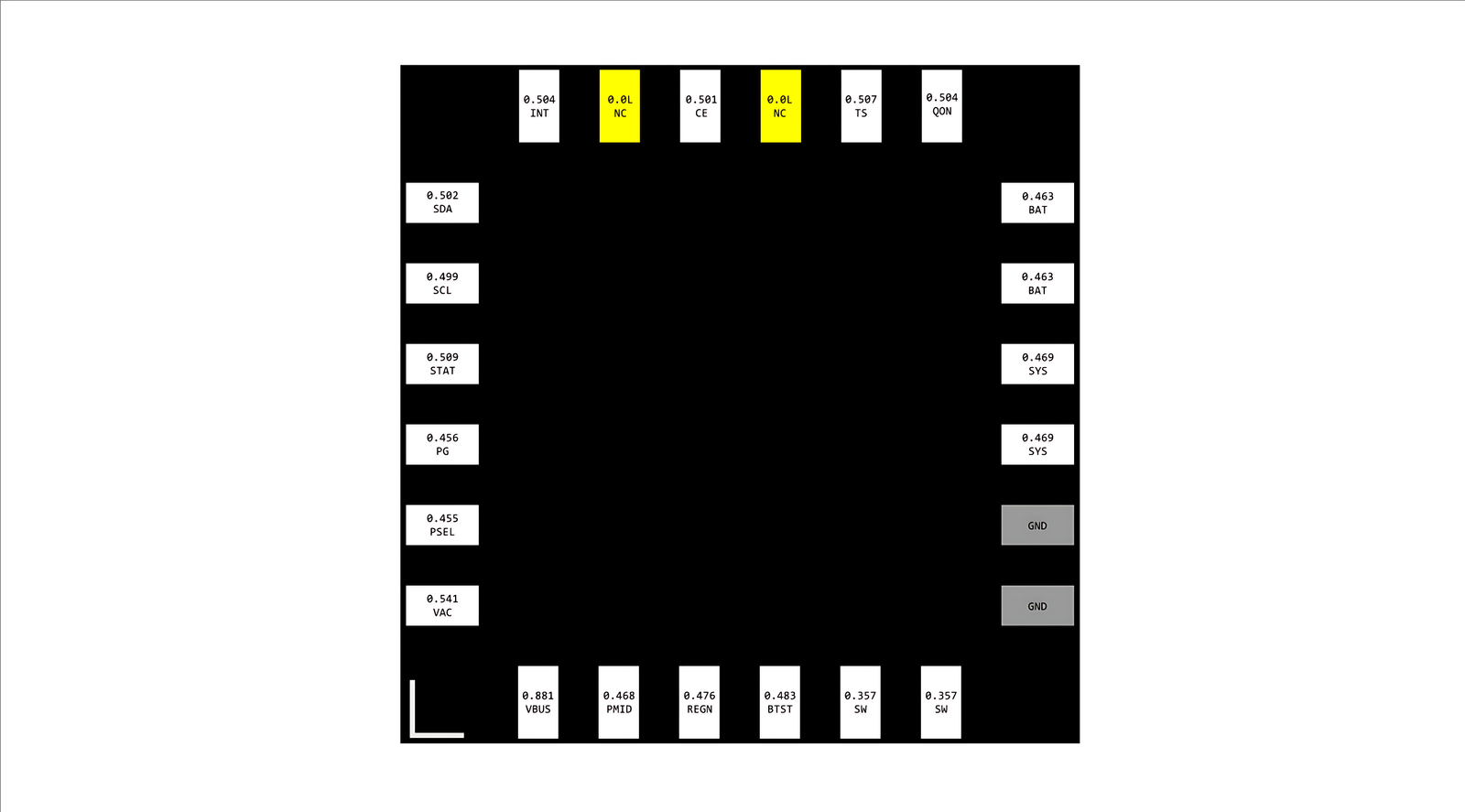BQ Series Battery Management IC


The BQ series ICs from Texas Instruments are smart battery management chips used to charge and monitor lithium-ion or lithium-polymer batteries. These chips are widely used in portable electronics like smartphones, IoT devices, tablets, and medical devices. The IC in the image is a typical BQ series chip with multiple pins used for different functions such as charging, communication, power management, and system output.
Main Functions
- Battery charging (Li-ion/Li-Po)
- System power path management
- USB/Adapter input handling
- Battery voltage, temperature, and charge monitoring
- Communication with host processor via I2C
Pinout and Description
| Pin | Name | Description |
|---|---|---|
| 0.504 | INT | Interrupt output to host controller |
| 0.501 | CE | Charge enable (LOW to enable charging) |
| 0.507 | TS | Thermistor input for battery temperature sensing |
| 0.504 | QON | Quick ON signal |
| 0.502 | SDA | I2C data line |
| 0.499 | SCL | I2C clock line |
| 0.509 | STAT | Charge status output (e.g., LED control) |
| 0.456 | PG | Power Good indication |
| 0.455 | PSEL | Power source select (USB or adapter) |
| 0.541 | VAC | AC adapter input voltage |
| 0.881 | VBUS | USB voltage input |
| 0.468 | PMID | Power management node (in/out) |
| 0.476 | REGN | 6V regulated output |
| 0.483 | BTST | Bootstrap for internal high-side driver |
| 0.357 | SW | Switching node (connects to inductor) |
| 0.463 | BAT | Battery terminal (charging connection) |
| 0.469 | SYS | System output voltage |
| — | GND | Ground |
| — | NC | No connect – not used internally |
How It Works
When the device is powered through USB (VBUS) or Adapter (VAC), the IC detects the input source. It then begins monitoring the connected battery via the BAT pin. If charging is needed, it initiates a safe charging sequence: first providing a low current if the battery is deeply discharged, then using a constant current until a certain voltage, and finally tapering off to avoid overcharging.
The IC also manages the power path, meaning it intelligently decides whether the system should be powered from the battery, USB, or adapter, ensuring the device stays powered even during charging. Communication via I2C allows a host microcontroller to monitor battery status, health, faults, and configure charging parameters.
Applications
- Smartphones and tablets
- IoT devices
- Medical and wearable devices
- Rechargeable power banks
- Battery-powered embedded systems
